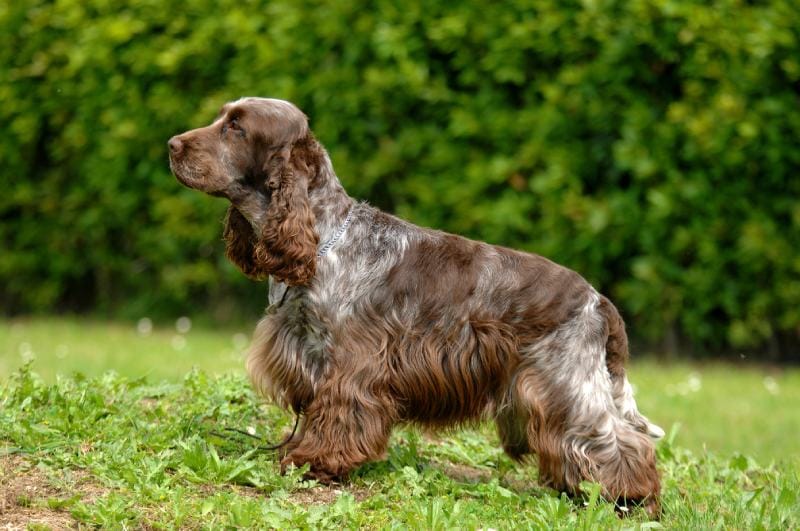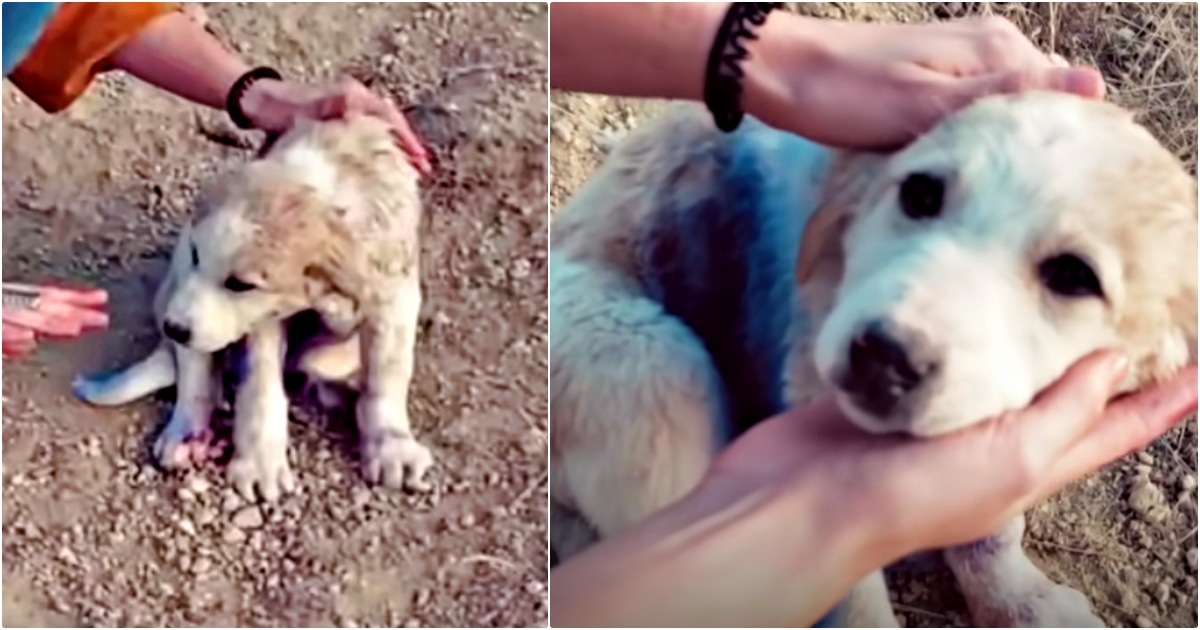
The information is current and up-to-date in accordance with the latest veterinarian research.
Learn more »
Just like cats and rabbits, dogs have a coat. However, most pet parents don’t know that fur and hair are two different things. That’s right: fur is much shorter yet denser, while hair tends to grow longer. Also, fur tends to shed more due to its thicker nature. So, yes, there are quite a few differences between dog hair and fur.
Is one better than the other? Which one is best if you have allergies? How do you take care of a pup’s coat? Can the average dog owner tell if their dog has fur or hair for a coat? We have all the answers right here! Join us, and let’s review the intricate details, including the growth cycle, maintenance recommendations, and more!
A Quick Comparison
Image Credit: Left – Chaikom, Shutterstock | Right – PRAPHAN BUNMAO, Shutterstock
Hair and Fur: Is It the Same Thing for Dogs?
The short answer is not exactly; while both terms are often used interchangeably, scientifically speaking, they are different. Hair and fur are quite similar, as they’re both made of keratin, a fibrous protein that generates nails, feathers, hooves, the skin’s outer layer, and, of course, hair and fur 1. So, it all comes down to the pup’s coat, its structure, and how long it gets.
Fur is genetically coded to stop growing once it reaches a certain length. The same doesn’t apply to hair, though. It keeps growing for long years and won’t stop; the only way to keep it short is by cutting it. For this reason, Poodles, Maltese, and other breeds with hair, have such lush coats and regular appointments at the groomer.
Image Credit: Sue Thatcher, Shutterstock
How Does a Dog’s Coat Grow?
Most dogs have double coats: the undercoat (soft coat) and the topcoat (outer coat). Single coats are easier to take care of, and are the same as the topcoat. What sets them apart, then? The topcoat grows very slowly, but is much longer and stronger than the undercoat. Also, while each strand of soft coat has only two layers (the cuticle and the cortex), the outer coat has an extra layer, the medulla.
So, when your dog sheds all over the carpet and the couch, that means it’s “letting go of” the undercoat. And here’s a quick look at the four growth stages in a dog’s coat 2:
This is when new hair starts growing.
This is when the coat reaches the point where it stops growing.
The coat is in the follicle but there is no growth – the ‘resting’ phase.
When it’s finally time for the hair to shed.
How Do You Groom a Dog With Fur?
The outer coat has a very hard time growing back, often with a very long Telogen phase. The undercoat is much more “aggressive” and quicker to regrow after shedding. That’s why you should think twice before shaving a fur-type topcoat: the doggo might lose it forever if you’re not careful! Instead, try the de-shedding technique. All you’ll have to do is buy a slicker brush and use it to get rid of dead fur.
The pooch will still shed after this, but not nearly as much. Besides, this will give the two of you a chance to get closer and develop trust. The dog will thank you for keeping its skin fresh, healthy, and well-protected against weather elements. Veterinarians also recommend de-shedding the coat to reveal any burn marks, infections, and other hidden diseases.
If you are an allergy sufferer, or don’t feel up to this task, find a good groomer who knows how to properly strip a double coat.
Image Credit: Karpova, Shuttertock
And What About a Dog With Hair?
Although this coat doesn’t really shed, it still needs attention. The fine strands are more prone to knots and getting matted, and curly coats can get a bit out of control.
It’s not essential to cut your dog’s hair, but it makes it a lot easier to maintain and keep your pup feeling comfortable. You might like to try your hand at grooming at home, but we recommend doing a bit of research first, and making sure you have the right equipment. Many pets end up at the vets with grooming-related lacerations!
If you’re not feeling too brave or artistic, there are plenty of groomers who can help your dog look and feel their best.
Shampoos and Conditioners: Treating a Dog’s Coat
Long hair tends to dry out and break. That’s where moisturizing products come in. Fur-type dog coats, in contrast, don’t need to be hydrated. Instead, you should treat them with a conditioner that’s rich in minerals. While it won’t make the fur last forever, with a decent-quality conditioner, the coat will be much stronger and regrow faster.
Which Coats Tend to Shed More?
Fur sheds more than hair: that’s a general rule that applies to all dog breeds. As mentioned, this has to do with the undercoat—it blows twice a year and covers the entire house in fur. So, don’t forget to keep up with the grooming routine. Furthermore, if you skip a brushing session or two, all that dear fur will get stuck beneath the topcoat (bad news for the pet’s skin).
Overall, canines with hair tend to be kinder to allergy sufferers when compared to pups with fur. Fur is thicker, sheds more, and generates more dander. Keep this in mind if you’re planning on adopting a doggo and someone in your family is allergic.
With that, it’s important to note the following:
No dog is 100% hypoallergenic – people are allergic to the proteins found in the saliva, urine and dander (dead skin cells), not the fur or hair itself.
Fur sheds more often, releasing dander into the atmosphere
Hair is much better at trapping the skin particles
Brushing helps avoid clumping and matting
Can You Tell if a Doggo Has Hair or Fur?
For the most part, yes, plus it depends on the breed. Puli, Havanese, Maltese, Shih Tzu, Yorkshire Terrier, and Poodle dogs all have hair, not a furry coat. And then we have Kerry Blue Terriers, Irish Water Spaniels, and Basenjis. Speaking of Poodles, they are known to have extremely “productive” follicles, and their hair grows longer and longer when left unattended.
As for canines with fur, some of the most popular examples include Retrievers (Labrador and Golden), French Bulldogs, Great Danes, German Shepherds, Akitas, and Boston Terriers, to name a few. To know for sure, you can always ask the folks at the adoption center or rescue organization. Breeders and licensed veterinarians will also be able to help.
In most cases, you can more easily part a dogs hair and see their skin, whereas this is much more of a challenge with fur.
Image Credit: Mary Swift, Shutterstock
What Factors Affect Coat Growth and Shedding?
Genetics play the biggest role here and determine what type of coat the doggo will have. Other important factors include climate, potential diseases, and nutrition, along with hormones. Speaking of the weather, it’s no secret that canines tend to blow their coats twice during the year: in early spring and in early fall.
Rapid temperature changes also affect the hair or fur, as can physiological stress. As for nutrition, shedding might be triggered by a lack of vital chemical compounds. By feeding the pet premium-quality food rich in protein, fats, vitamins, and minerals, you should be able to make the fur/hair stronger and less prone to shedding.
Image Credit: Filmbildfabrik, Shutterstock
Why Do Canines Need a Coat, Anyway?
The best way to describe a dog’s coat is to call it a natural insulator. When it’s cold outside, the fur/hair protects the pup from the wind and the low temps. During hot summer days, when the sun is up, that same coat safeguards the pet from overheating. Apart from thermoregulation, the coat does a great job of protecting the skin from scratches, cuts, and even bites.
Conclusion
We can see that, despite often being referred to as the same thing, fur and hair are actually quite different. Dogs with hair may need extra protection from cold weather, will shed less, but need more regular grooming. Fur stops growing at a set length, so it doesn’t tend to get tangled and unruly, but it will shed more often. Dogs with fur and hair can still trigger allergies in people; even a completely hairless dog can, but due to being less dense and shedding less, hair is the better choice for allergy sufferers.
In both cases, following the right grooming and coat care regime can make all the difference when it comes to the health and comfort of your pet, as well as the amount of fur on your bed, furniture, clothes, kitchen counter, food…you get the idea!
If you’re not sure about how best to look after your dog’s coat, speak to your vet.
Featured Image Credit: Ricantimages, Shutterstock






